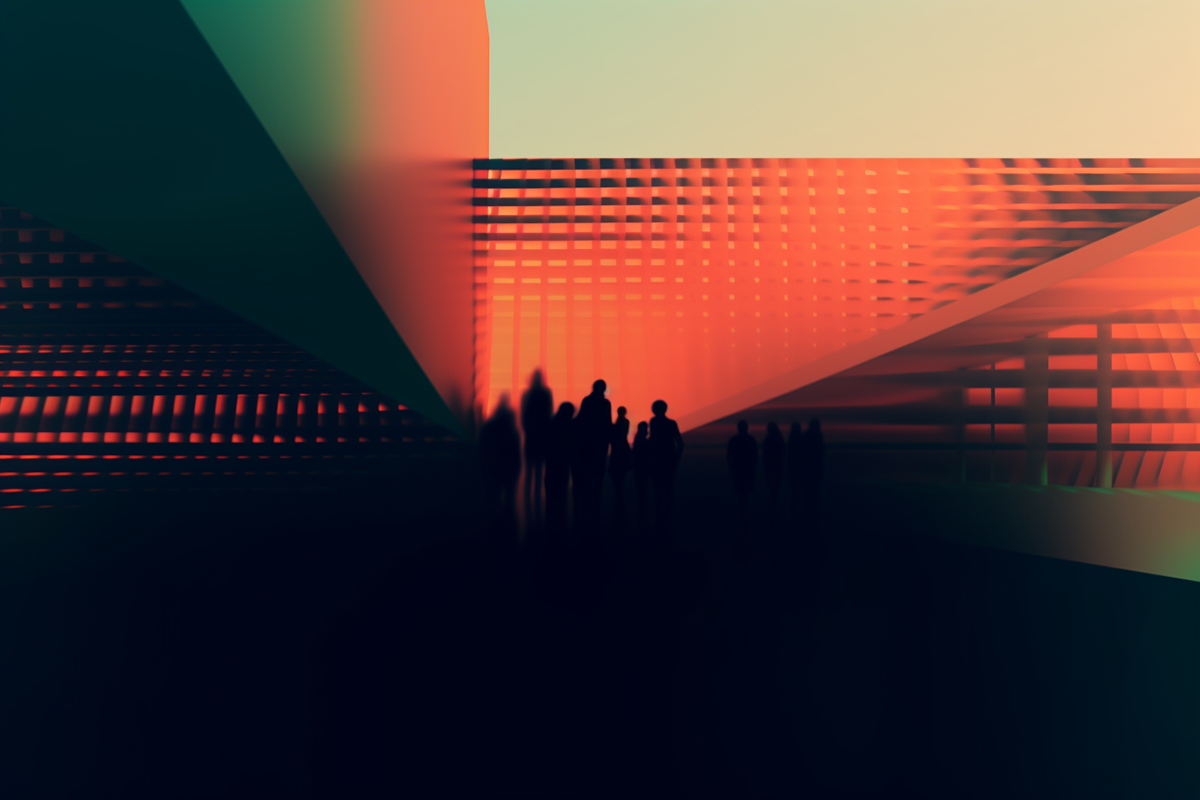Delving into the World of AI Image Generation: A Guide to Understanding Key Architectures
- 6 minutes read - 1095 words
Table of Contents
AI-powered image generation has advanced rapidly in recent years, providing artists and designers with innovative tools for creating one-of-a-kind visuals. Four distinct architectures stand out among the vast array of AI models available: Variational Autoencoders (VAEs), Generative Adversarial Networks (GANs), Vision Transformers (ViTs), and Stable Diffusion (SD).
This blog post aims to provide a comprehensive comparison of these architectures, delving into their primary purposes, methods, and performance metrics to provide you with a better understanding of the fascinating world of AI-generated imagery.
What is an AI model architecture?
AI model architecture refers to the underlying structure and design of an artificial intelligence model. It includes the arrangement of layers, activation functions, and other components that define how the model processes and learns from data.
The choice of architecture plays a crucial role in determining a model’s performance, efficiency, and adaptability to various tasks.
How is an AI model created?
The creation of an AI model generally involves two main steps: training and inference. During training, the model learns patterns and features from a dataset by minimizing a predefined loss function.
Inference refers to the process of using the trained model to generate new outputs or predictions based on input data. For generative models, this often involves producing unique and realistic images from a given input seed.
Comparing AI Image Generation Architectures
Stable Diffusion is probably the most prominent AI architecture to create images, but it is by far not the only one; there are:
- Variational Autoencoders (VAEs)
- Generative Adversarial Networks (GANs)
- Vision Transformers (ViTs)
- Stable Diffusion (SD)
Each model has a unique set of primary purposes, methods, and performance metrics:
Variational Autoencoders (VAEs)
- Primary purposes: Image generation, unsupervised learning, representation learning
- Method: Combines deep learning techniques with probabilistic modeling, consists of an encoder and a decoder, learns a smooth and continuous latent space representation
- Performance: Used for data denoising, dimensionality reduction, and representation learning, generates realistic samples
Vision Transformer (ViT)
- Primary purpose: Image recognition (can be adapted for image creation using image-to-image translation)
- Method: Applies transformer architecture to computer vision problems, divides input images into fixed-size non-overlapping patches, and processes them as sequences
- Performance: Not primarily designed for image generation but can lead to exciting results when adapted for this purpose using image-to-image translation techniques
Generative Adversarial Networks (GANs)
- Primary purposes: Image generation, image restoration, image enhancement
- Method: Consists of a generator and a discriminator trained together in a minimax game. The generator creates realistic images; the discriminator distinguishes between real and fake images
- Performance: Highly successful in generating realistic images across various domains, but challenging to train due to mode collapse, vanishing gradients, and instability during training
Stable Diffusion (SD)
- Primary purpose: Image generation (specifically denoising, which is leveraged for image creation)
- Method: Combines forward diffusion process (adding noise) and reverse diffusion process (removing noise), learns to remove noise effectively, understanding the data distribution and structure
- Performance: Capable of generating high-quality images by learning the underlying structure and features of the images in the dataset
VAEs and GANs are commonly used to make pictures, while Stable Diffusion is a unique way to make good pictures by learning to remove unwanted parts. ViTs are mainly used for finding things in pictures, but they can also make pictures themselves with techniques like image-to-image translation.
Subtypes of AI architectures
The AI architectures mentioned aboved should be seen a AI architecture families.
There are several variations and sub-types within these AI architectures, often developed to address specific limitations or to improve performance. Here are some prominent examples for each architecture:
Variational Autoencoders (VAEs):
- Conditional VAEs (CVAEs): These are an extension of VAEs that incorporate additional information (e.g., class labels) into the generative process, allowing more control over the generated images.
- β-VAEs: This variation introduces a hyperparameter (β) to balance the trade-off between reconstruction quality and the structure of the learned latent space, helping to improve disentanglement and interpretability.
Generative Adversarial Networks (GANs):
- Deep Convolutional GANs (DCGANs): DCGANs use convolutional layers in both the generator and discriminator, improving stability during training and enabling the generation of higher-resolution images.
- Wasserstein GANs (WGANs): WGANs introduce a new objective function based on the Wasserstein distance, which mitigates issues with training instability and mode collapse.
- Conditional GANs (CGANs): Similar to CVAEs, CGANs incorporate additional information (e.g., class labels) into the generative process, providing more control over the output.
- StyleGAN and StyleGAN2: These GAN variants introduce a style-based generator architecture, enabling better disentanglement of high-level attributes and improved image quality at high resolutions.
- GigaGAN: GigaGAN is a large-scale modified GAN architecture for text-to-image synthesis, it is very fast and can upscale images 16x.
Vision Transformers (ViTs):
- Data-efficient Image Transformers (DeiT): DeiT is a variation of ViTs that focuses on improving data efficiency, requiring fewer training samples to achieve competitive performance in image classification tasks.
- Swin Transformers: This variant of ViTs introduces hierarchical partitioning of image patches and a shifted window-based self-attention mechanism to efficiently process large images while maintaining computational efficiency.
Stable Diffusion (SD):
Although there aren’t many sub-types of Stable Diffusion yet, researchers are actively working on improving and extending the technique, and new variations may emerge in the future.
- Denoising Score Matching (DSM): DSM is a closely related method to Stable Diffusion, which trains a denoising model by minimizing a score matching objective. While not a direct sub-type, it shares similarities in the denoising approach.
Researchers frequently combine elements from multiple architectures to create hybrid models, with the goal of leveraging each approach’s strengths while overcoming its limitations. The field of generative models is rapidly evolving, with new variations and sub-types emerging as researchers experiment with new techniques and improve on existing ones.
Conclusions
The comparison of these four key AI image generation architectures provides valuable insights into their unique features, strengths, and weaknesses. While VAEs and GANs are commonly used for image generation, Stable Diffusion offers a novel approach by focusing on denoising for image creation. Vision Transformers, primarily designed for image recognition, can also be adapted for image generation using techniques such as image-to-image translation.
Understanding the various AI image generation architectures empowers artists and designers to make informed decisions when selecting the most appropriate
Sources:
- https://insightsimaging.springeropen.com/articles/10.1007/s13244-018-0639-9
- https://blogs.nvidia.com/blog/2022/12/08/what-is-a-pretrained-ai-model/
- https://neptune.ai/blog/6-gan-architectures
- https://www.marktechpost.com/2022/11/14/how-do-dall·e-2-stable-diffusion-and-midjourney-work/
- https://medium.com/geekculture/introducing-gigagan-new-framework-challenging-diffusion-models-f7c48f03a4dd


